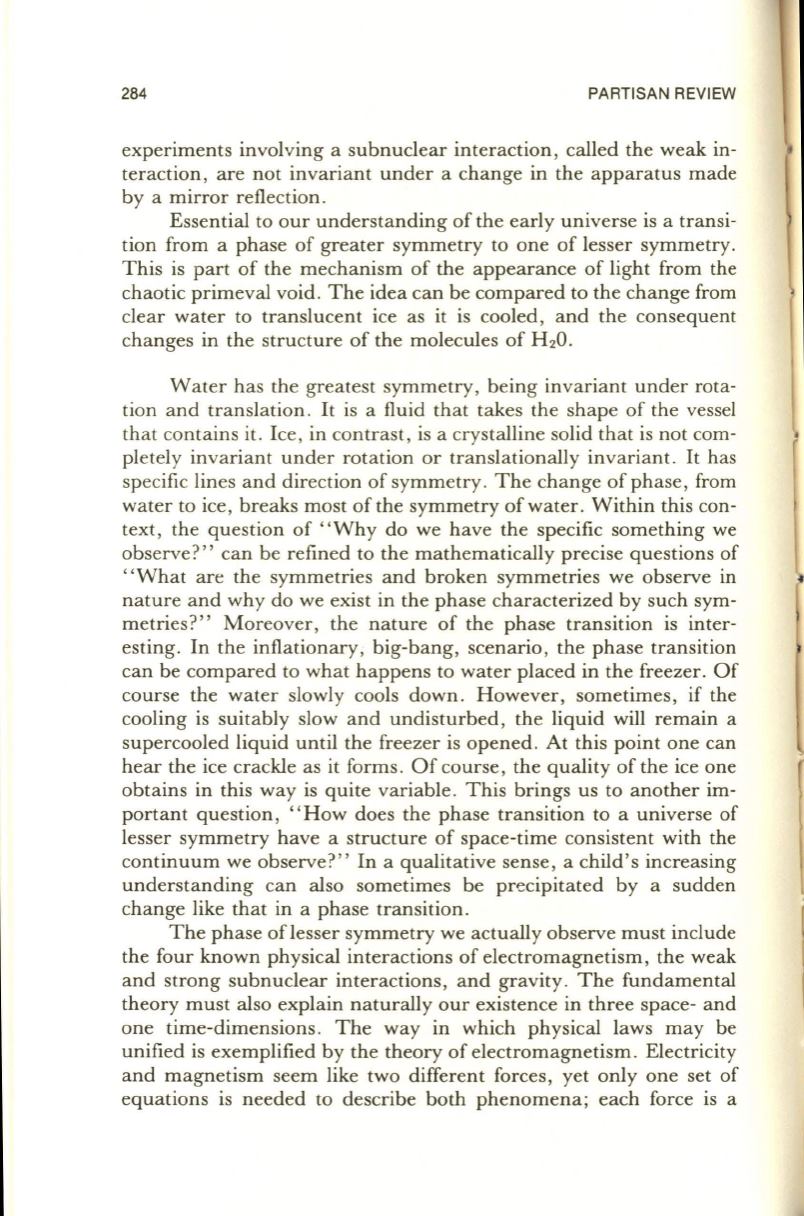
284
PARTISAN REVIEW
experiments involving a subnuclear interaction, called the weak in–
teraction, are not invariant under a change in the apparatus made
by a mirror reflection .
Essential to our understanding of the early universe is a transi–
tion from a phase of greater symmetry to one of lesser symmetry .
This is part of the mechanism of the appearance of light from the
chaotic primeval void. The idea can be compared to the change from
clear water to translucent ice as it is cooled, and the consequent
changes in the structure of the molecules of H
2
0 .
Water has the greatest symmetry, being invariant under rota–
tion and translation. It is a fluid that takes the shape of the vessel
that contains it. Ice , in contrast , is a crystalline solid that is not com–
pletely invariant under rotation or translationally invariant.
It
has
specific lines and direction of symmetry. The change of phase, from
water to ice, breaks most of the symmetry of water. Within this con–
text , the question of "Why do we have the specific something we
observe ?" can be refined to the mathematically precise questions of
"What are the symmetries and broken symmetries we observe in
f
nature and why do we exist in the phase characterized by such sym–
metries?" Moreover, the nature of the phase transition is inter-
esting. In the inflationary, big-bang, scenario, the phase transition
can be compared to what happens to water placed in the freezer. Of
course the water slowly cools down . However, sometimes, if the
cooling is suitably slow and undisturbed, the liquid will remain a
supercooled liquid until the freezer is opened. At this point one can
hear the ice crackle as it forms . Of course, the quality of the ice one
obtains in this way is quite variable . This brings us to another im–
portant question, "How does the phase transition to a universe of
lesser symmetry have a structure of space-time consistent with the
continuum we observe?" In a qualitative sense, a child ' s increasing
understanding can also sometimes be precipitated by a sudden
change like that in a phase transition.
The phase of lesser symmetry we actually observe must include
the four known physical interactions of electromagnetism, the weak
and strong subnuclear interactions, and gravity. The fundamental
theory must also explain naturally our existence in three space- and
one time-dimensions. The way in which physical laws may be
unified is exemplified by the theory of electromagnetism. Electricity
and magnetism seem like two different forces, yet only one set of
equations is needed to describe both phenomena; each force is a


